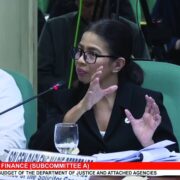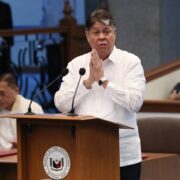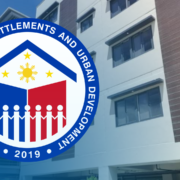‘Tsismis’ and intelligence gathering

Over the years, I have come across surveillance records in libraries and archives. These cover the late 19th century to contemporary lists of drug users, addicts, and pushers used to justify extrajudicial killings in former President Rodrigo Duterte’s war on drugs. These records can be sensational, but they have to be read with caution. They contain raw intelligence information that was not subjected to critical analysis or validation. These records can make or break reputations if made public.
Many years ago, I sat beside the director of the National Intelligence Coordinating Agency, the office that supplies the President and the National Security Council with intelligence data that informs policy decisions. I asked him how long their records remain current, or if they have a cutoff date to declassify them. With the magic number usually set at 50 years, or half a century, I asked if old intelligence records could be transferred to the National Archives or the National Historical Commission for research and reference. The director said he would look into it, but he never got back to me. Where are these records, and what do they contain about ordinary persons like you and me? I’ve always been curious to see my dossier, if it exists, just to know what kind of information the government has collected on me.
Many years ago, in the archives of the Spanish Ministerio de Asuntos Exteriores (Foreign Affairs Ministry), I found the dispatches of the Spanish consul in Hong Kong, which reported on the Filipinos’ interest in the colony. Rizal and his family were part of the archive, Josephine Bracken, too, and that is where I first found clippings of Hong Kong newspapers that heralded her not just as the widow of Rizal but also portrayed her as a modern-day Joan of Arc who fought alongside the Katipuneros in the first phase of the Philippine Revolution. That Spanish consul, Jose de Navarro, is best described in modern terms as “marites,” who sent all sorts of material to Madrid for the information of the ministry.
In the Philippines, we had the special branch of the guardia civil known as the “Cuerpo de Vigilancia” (surveillance body), which gathered all sorts of news from all parts of the Philippines and sent these to Manila to be collated and analyzed. Will write more about this archive in a future column. While going over my notes on Marcelo H. del Pilar recently, I found the report of Lt. Cmdr. Jose de Senespleda from May 1895 that lays a wide net not just for people associated with Plaridel but also anyone considered suspicious, Masonic, heretical, or anti-Spanish. At the top of the list was:
“Don Manuel Crisostomo, approximately 40 years old … former Gobernadorcillo and present municipal captain. Has little affection for our institutions and is particularly anti-monastic; has a cousin or nephew called Graciano Crisostomo who is a cleric, and being a coadjutant in Iban (Batangas), was sued for leaving the seminary where he had spent two years.”
A lot of material is reported, but it is made clear that: “I have no proof to present as to their being anti-Spanish or not, but I am convinced they are, and that they are anti-friar.” Then as now, such a report is dangerous because rumors can be mistaken for fact, and old scores can be settled by inventing stories about your enemies or people you simply do not like.
Don Vicente Gatmaytan, 40 years old, married, and a former captain in Malolos, was watched because he was the “compadre” of Luis del Pilar, who happens to be a cousin of Marcelo del Pilar. He was an in-law of Manuel Crisostomo, reported above. The intelligence report notes that:
“Don Vicente is shy and reserved, but he reveals his anti-friar sentiments in all his conversations, and I also believe him to be one of the filibusterers. There should also be past information about him.”
What I find interesting is the detail in the descriptions, which can be read more like an ethnography of Malolos rather than an intelligence report, because it details family, church, and social relations. It also notes different occupations, educational attainment, etc. Anastacio de Leon, for example, was 42 years old, married and a lieutenant in charge of livestock:
“A man with little education, with a bad disposition and great influence in the municipality, a fact that I find strange but that I attribute to his having ties with respectable people … [he] is by nature cunning and cynical. He was head sacristan and choir boy of the [Malolos] church some years ago and was dismissed because of his behavior, and since then, he has been one of the satellites of Marcelo and Luis del Pilar in their plans against the friars. I also think he is anti-Spanish like the rest.”
Other citizens in Malolos are referenced in the report that prompted the governor general in Manila to issue an order of banishment. Manuel Crisostomo was ordered out of Malolos and exiled to Jolo, while Gatmaytan was exiled to Iligan. Others to Davao, Sarangani, and even Puerto Princesa. So much suffering caused by “tsismis” in the guise of intelligence.
—————-
Comments are welcome at ambeth.ocampo@inquirer.net
Ambeth is a Public Historian whose research covers 19th century Philippines: its art, culture, and the people who figure in the birth of the nation. Professor and former Chair, Department of History, Ateneo de Manila University, he writes a widely-read editorial page column for the Philippine Daily Inquirer, and has published over 30 books—the most recent being: Martial Law: Looking Back 15 (Anvil, 2021) and Yaman: History and Heritage in Philippine Money (Bangko Sentral ng Pilipinas, 2021).





















Labeling AI-generated content